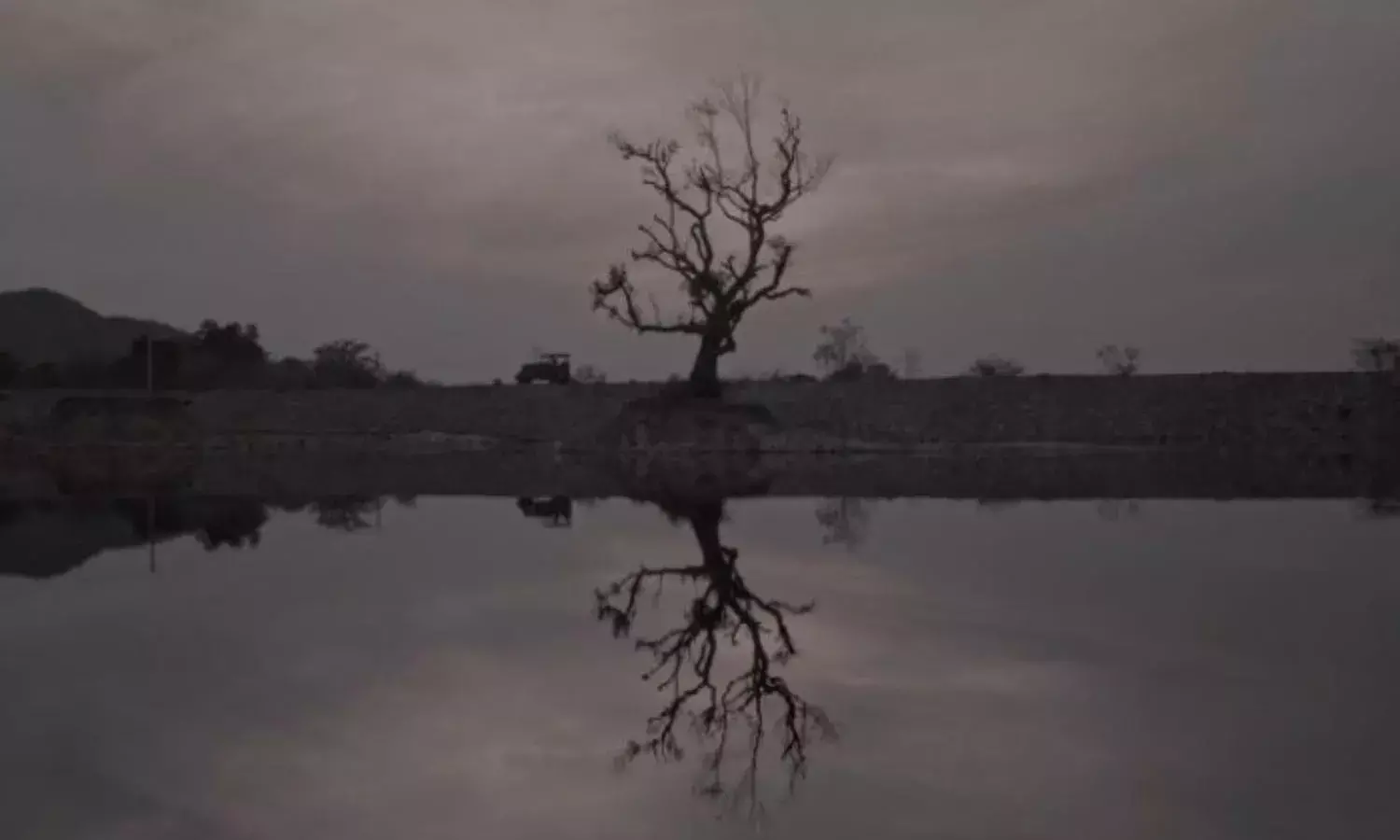A Film on Jadugoda, Uranium Mining Hotspot in Santhal Land
The Santhali people of Jharkhand are one of India's largest Indigenous groups

“You look like a film heroine,” the husband compliments his wife, wanting to place a bindi on her forehead. A Santhali couple living by themselves, they have no one but each other to love, comfort and support. Their daughter is dead.
In the slow pace of the couple’s lives juxtaposed against forests, trees and bird songs, there is transition and urgency. Their lives are going to change forever.
The government is taking away their lands and forcing people to move out. The shadow of uranium mining creeps in, spreading its dark wings like a demon. But while others flee with their belongings and livestock, the couple stays behind.
The husband promises to build a new house inside the dense forest away from the village. The wife who came in search of him seeking divine help cannot leave him, and they sit in silence surrounded by nature.
Director Shishir Jha’s Santhali feature film Dharti Latar Re Horo (Tortoise under the earth) has been selected in the spotlight section of the Jio MAMI Mumbai Film Festival 2022. Jha’s debut movie, the 95-minute film shot in Jadugoda, East Singhbhum, Jharkhand is also available to watch online.
The opening scene shows a huge banyan tree which is supposedly haunted. But in reality it is the spectre of uranium mining, causing deaths and illness in the village, and not witches and ghosts as generally believed.
In one scene a baffled younger man informs the male protagonist (played by Jagarnath Baskey) that his cow has suddenly passed away and all his chickens died one by one. In the event of little or no solid information, the villagers are in the dark about the government’s intention. News about the violent exploitation of Indigenous people in Godda district reaches Baskey by radio.
And then the crisis arrives during heavy monsoon. All water sources in the village become contaminated due to radioactive leaks from the uranium tailing pond, and people are advised not to drink water from wells and other sources. Poison seeps into fertile farmlands where women sow paddy saplings.
The Santhali people of Jharkhand mostly found in East Singhbhum are one of the largest Indigenous groups in India. Mining has greatly impacted Jharkhand’s Adivasi people, who have repeatedly protested against violent coal, bauxite and uranium mining over the years. Mining is carried out with little consideration for their lives, severely compromising the basic rights of Adivasi people.
Jha’s film, however, doesn’t capture uranium being mined. Rather it poignantly “narrates” the loss of cultural identity as a result of mass displacement. As people are made to leave in search of another land to rebuild their broken lives, their beautiful painted walls come into view. Will anyone ever stay in these houses? What will happen to the hours of love and care the women devoted to painting the walls?
Speaking from Mumbai, Jha said displacement due to mining is taking place across Jharkhand. Indigenous communities are made to keep moving from one place to another in search of livelihoods and clean water sources.
In Jadugoda this reporter saw the menacing tailing ponds which store slurry and mining waste that are sources of radiation in the area. Many experts point out that it has led to congenital deformities among children in several villages of the area.
To shoot the film, Jha spent a year in Talsa village working with a minimal crew. “I look at cinema differently and wanted to find my own voice through Tortoise under the earth. I am not an activist. I wanted to tell the story through portraying human lives and cultural values. It is in Santhali as I wanted to retain the flavour of the land.”
The symbolic mythical tale about how the Earth was created through the joint efforts of a tortoise and an earthworm is beautiful. In the film, the tale is told by the husband to his wife played by Mugli Baskey. The tortoise carries the soil on its back, piled up and kept there by the earthworm from the seabed. Crops grow on this fertile soil but mining ruins everything. It brings desolation, loss and despair.
Images Shishir Jha



